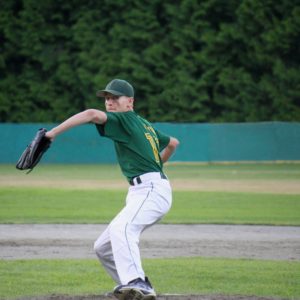Medial-Sided Elbow Pain
Medial elbow pain tends to raise the alarm for most baseball players. The biggest fear is that it could be an ulnar collateral ligament (UCL) injury, which has a long and difficult recovery timeline. Dr. Kevin Witte is a sports medicine surgeon who specializes in injuries of throwing athletes. He describes types of medial-sided elbow pain in throwing athletes.
Dr. Witte explains the types of injuries
Main injuries to athletes with medial-sided elbow pain
Ulnar Nerve. Ulnar nerve issues are not uncommon in throwing athletes. In overhead athletes, ulnar nerve compression can develop over time and can result in medial-sided elbow pain that can radiate down into the ring and small finger, causing pain and or numbness. Sometimes the nerve subluxes, or pops out of the groove that it sits in on the medial side of the elbow. This can be associated with a pop and or pain at the elbow. The pain can be felt at any point in the throwing motion.
Medial Epicondyle Apophysitis. Medial-sided elbow pain that is usually seen in ages 15 and under is most commonly caused by overuse. The associated pain can be felt throughout the throwing motion but is most commonly felt during the late cocking phase and acceleration. Treatment is therapy, rest, and anti-inflammatories. Chronic apophysitis that is ignored can lead to a fracture and possibly surgery.
Flexor muscle strain. Flexor muscle strain is medial-sided elbow pain that is associated with a strain of the muscles attached to the medial epicondyle. This pain is mostly felt during the follow-through and release phases of throwing. This can be from fatigue and overuse or from a one-time throwing injury. Treatment is therapy, rest, throwing mechanics work, and anti-inflammatories.

UCL/Tommy John. The most infamous and feared cause of medial-sided elbow pain is a strain or tear of the ulnar collateral ligament (UCL). This ligament is one of the attachments of the upper arm bone (humerus) to one of the forearm bones (ulna). It is often called the Tommy John ligament in reference to the first MLB pitcher who had a successful reconstruction and return to play. The pain is felt during the late cocking and acceleration phases of throwing. It can be associated with ulnar nerve symptoms but not always. The injury is often from overuse and can be felt with a gradual onset or can be felt after a single throwing event. Strains and partial tears are initially treated conservatively. Full tears of the UCL often require surgery.
LEARN MORE
Many medial-sided elbow injuries in youth athletes can be prevented. An important reminder is to avoid playing year-round baseball (or any other sport, for that matter) to give specific muscle groups a chance to rest and recoup. This is especially important for young players as their muscles and bones are still fragile and developing. Sports should be fun! Our goal is to keep athletes in the game playing what they love to play.
Tommy John Surgery
Tommy John surgery is also known as Ulnar Collateral Ligament (UCL) Reconstruction. When the stress of pitching or overhead throwing tears the UCL, Tommy John Surgery is the procedure to stabilize the inner side of the elbow.
More about Elbow Injuries
Learn more about elbow injuries on the AAOS Ortho Info website.
See a Specialist
Learn more about our orthopedic sports medicine specialists.
